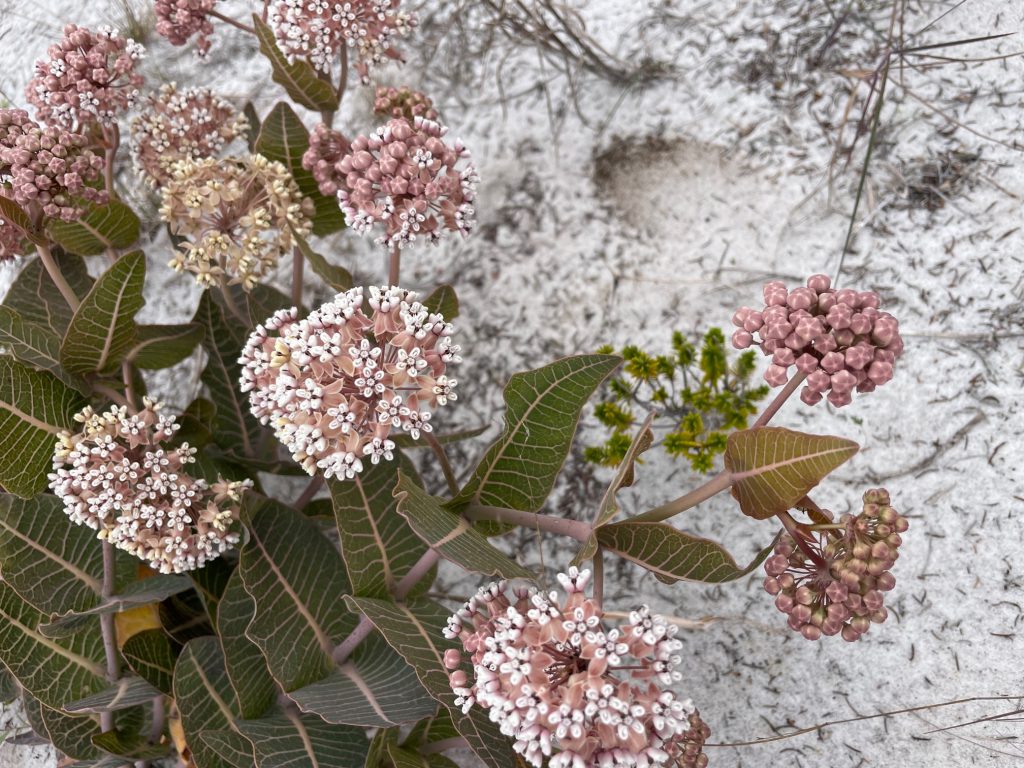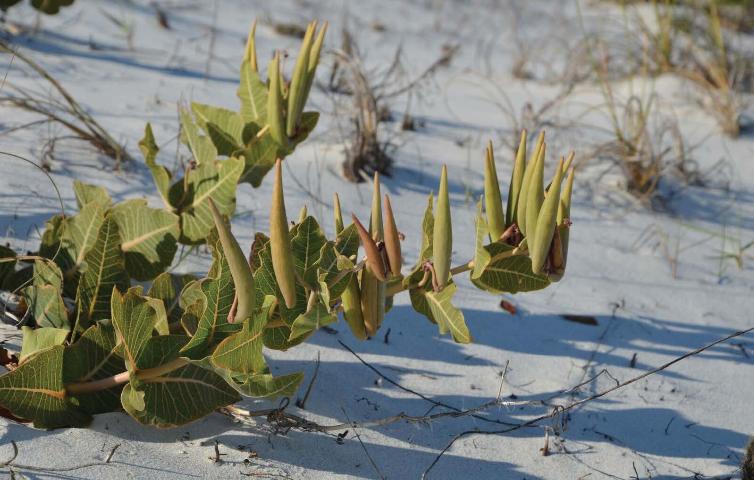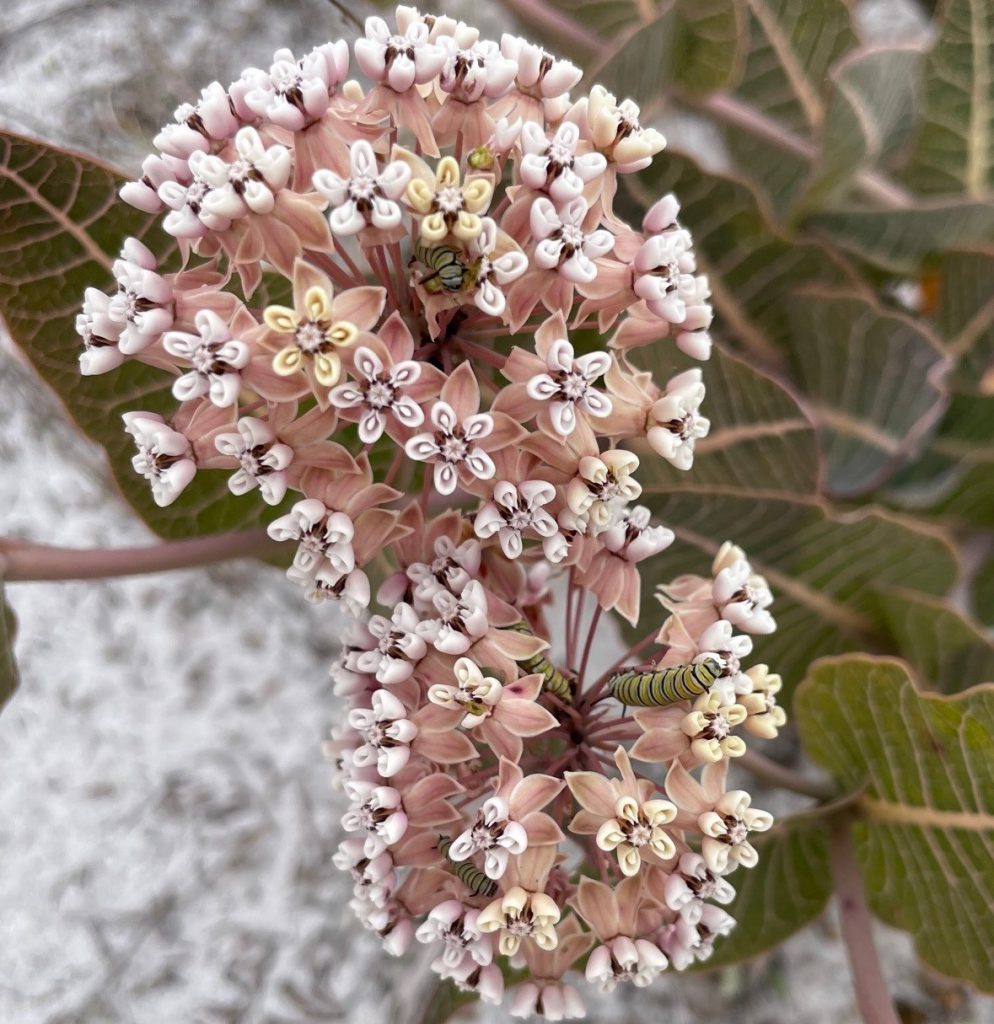Like finding buried treasure on a desert island, walking up on a mound of sandhill milkweed (Asclepias humistrata) may elicit cries of excitement from someone who understands what they’re seeing. And not unlike searching for pirate booty, there’s a bit of danger involved, too—milkweed is highly toxic.

Last month in the dunes of Perdido Key, our Master Naturalist class found robust clusters of eye-catching, pink-tinged leaves, blooms, and buds of sandhill milkweed. Also known as pinewoods milkweed, this variety thrives in dry, sandy soils. It is native to the southeast, found typically in the wilds of Alabama, Mississippi, Louisiana, Georgia, Florida, South Carolina, and North Carolina. Its genus name, “Asclepias” refers to the Greek god of healing—indigenous people have used the plant for medicinal purposes (dysentery treatment and wart removal, in particular) for centuries. The species name humistrata means “spreading,” which describes the growth habit of the plant. Milkweed is highly toxic, so we do not recommend trying any medicinal uses at home! The “milk” part of the common name refers to its sap, which is a thick, sticky, white substance containing that toxic chemical.

As the only food source for the monarch caterpillar, healthy milkweed plants are crucial for maintaining populations of the famous monarch butterfly. The plant itself is rather complex and beautiful. Its five-petaled blooms grow in tight clusters, on stalks sticking several inches off the ground. The leaves are broad and a deep forest green, edged in the pale maroon/pink of the stems and flowers. The seedpods of milkweed are quite large (3-6” long), resembling pea pods and full of seeds. Each seed has a wispy white fiber attached, which helps it disperse in the wind like a dandelion. The fibers have been used for years as stuffing for pillows and mattresses, and were used for life jackets during World War 2.

The first cluster of milkweed we found was host to multiple monarch caterpillars, recognizable by their greenish-yellow, white, and black stripes. By the time you see caterpillars, the milkweed is already working its magic, transferring its toxins to the insects but causing them no harm. Monarchs have evolved the capability to digest and metabolize this poison, which would induce heart attacks in nearly any vertebrate animal. Adult monarchs use several nectar sources, including milkweed flowers, and females lay their eggs on the plant so that their young can begin eating once hatched.
In the animal kingdom, red and orange are signs of danger. The bright orange coloration of an adult monarch butterfly serves as a warning to would-be predators to exhibit caution, as the toxins from their food sources stay within the butterfly’s body. The copycat viceroy, soldier, queen, and Gulf fritillary butterflies benefit from this trait by using mimicry in their own orange coloration to ward off predators.
- Green Anoles - July 11, 2025
- The Praying Mantis - June 20, 2025
- Bluebirds in Florida - May 8, 2025
